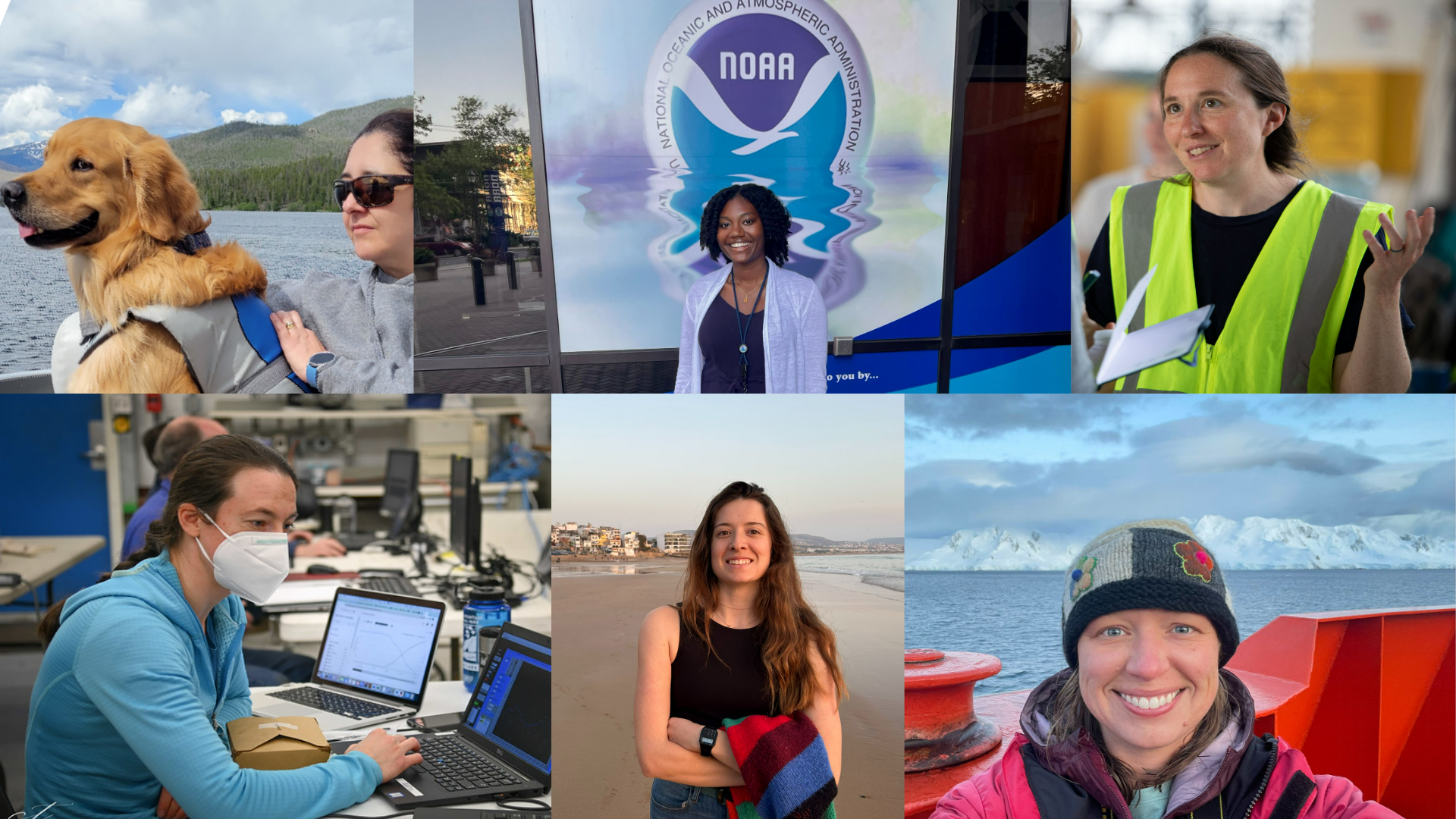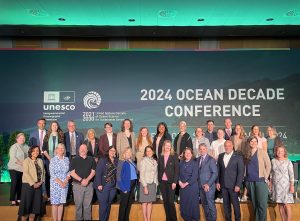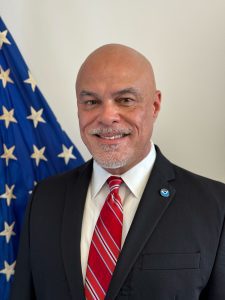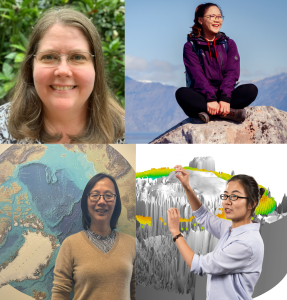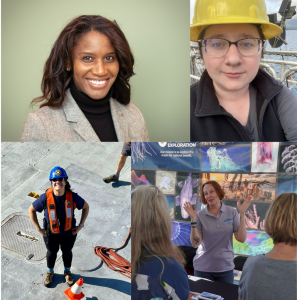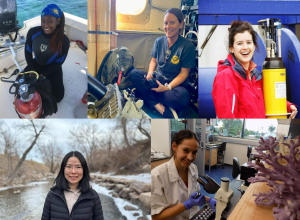While the women of NOAA Research contribute to innovative and impactful progress towards NOAA’s mission year-round, we take the month of March, Women’s History Month, as an opportunity to get to know them on a deeper level. One of NOAA’s research areas in which women are making critical contributions is in the monitoring of global greenhouse gas concentrations, which continue to rise and impact local and global systems in ways we are still working to understand. NOAA maintains long-term and geographically varied monitoring efforts to observe how greenhouse gases vary throughout time and space, influence climate change, and impact human health. Keep reading to meet six women who are tackling these challenges head on through innovating measurement technologies, integrating data into models, translating research findings into content for a variety of audiences, and more!
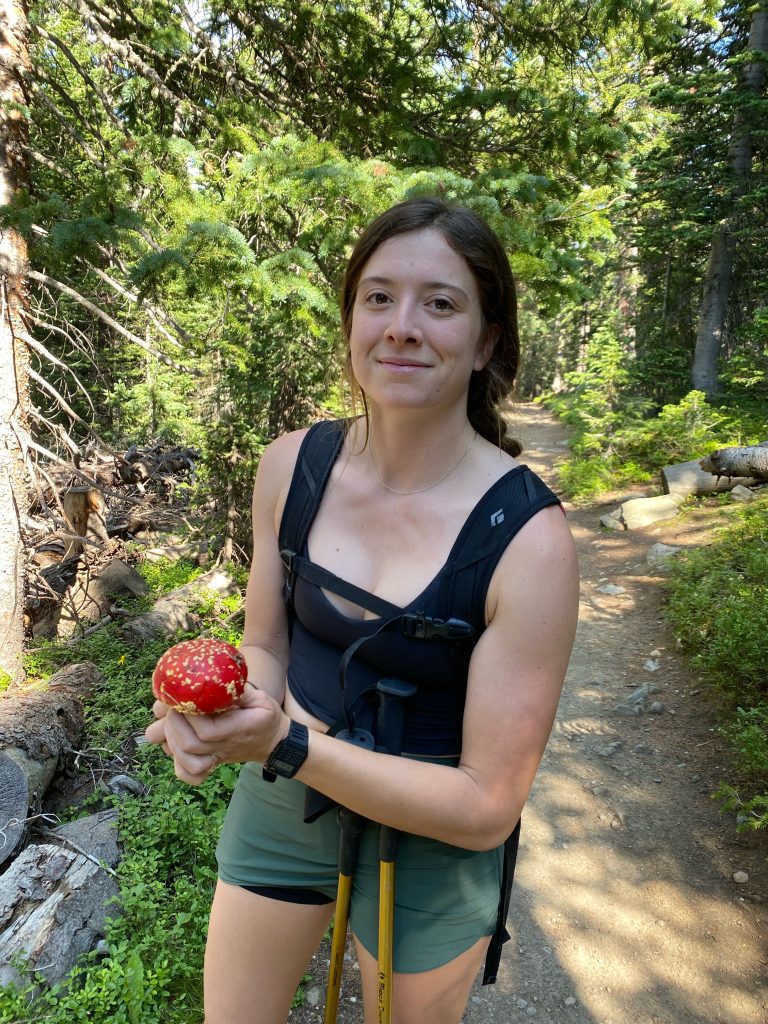
Anna McAuliffe is a CIRES Associate Scientist/Measurement Systems Engineer working at NOAA’s Global Monitoring Laboratory in the Technology, Transitions, Engineering, and Applications Group. She works in greenhouse gas research, specifically focusing on developing and maintaining atmospheric sampling instrumentation for aircraft and shipboard platforms, investigating new technology for greenhouse gas measurements, and integrating systems from the laboratory into an operational environment.
Read about how Anna keeps a positive mindset while working in a climate related field, as well as how she is working towards getting her pilot license by clicking here.
When asked about how she keeps a positive mindset in a climate related field, Anna said “though I find it easy to ruminate on the negatives of climate change and its effect on the public, I keep a positive mindset by reflecting on how lucky I am to be working so closely with the natural world and our atmosphere. It’s silly, but sometimes I even imagine that the gas analyzers we use in the lab and field are just air-to-human translation devices. I feel extremely lucky to be working in the Global Monitoring Laboratory surrounded by my coworkers who are extremely driven, inspiring, intelligent, and kind.”
Not only does Anna love getting to go on science flights for work, but recently she started flying for fun! She is working towards getting her pilot’s license, which involves taking flying lessons before work, and attending night ground school. Anna said that learning to fly has also been a great way to take a holistic approach to their existing aircraft operations, such as understanding the pilot’s needs during science flights.
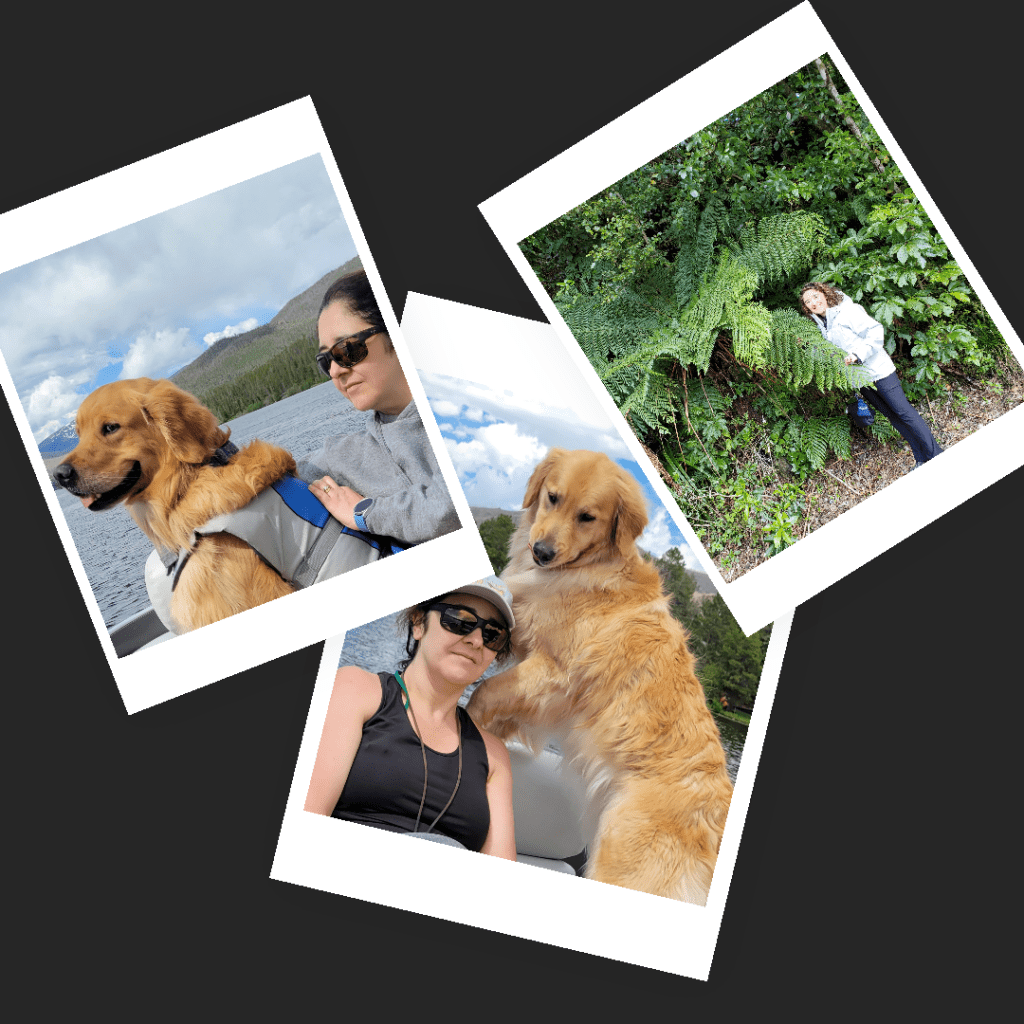

Monica Madronich is a CIRES Associate who works at the NOAA Global Monitoring Lab (GML) in the Long-term Observations of Greenhouse Gases and Ozone-depleting Substances Division as an Associate Scientist. Monica is in charge of the Measurement of Atmospheric Gases that Influence Climate Change (MAGICC) project. She analyzes samples from all over the world and measures the concentrations of the six major greenhouse gases. She also analyzes about 10,000-15,000 air samples every year!
Read about how Monica keeps a positive mindset while working in a climate related field as well as her advice for women looking to enter this field by clicking here.
Monica’s advice for young women looking to enter the field is to do what makes you have fun while doing it, and do not give up. During her PhD studies, Monica had a major setback (sometimes your study system does not cooperate) and she essentially had to start from scratch. She was distraught and her advisor told her to “take a break, and if you find out that it is not fun (science is fun) for you anymore, I will support you and you can get your masters instead.” After taking a break, she found the fun again and was able to finish her PhD.
Monica maintains a positive outlook while working in a climate related field by believing in the power of education and information. She recognizes that the work being done at NOAA GML provides both education and information about greenhouse gasses, and the data from her analyses clearly demonstrates that greenhouse gas concentrations are increasing in our atmosphere. She hopes this work spreads awareness to people, especially of the implications these higher concentrations pose.


Amber Liggett works for the NOAA Climate Program Office (CPO) as a Communications Specialist. She currently leads an agency-wide project to develop a greenhouse gas index webpage on Climate.gov that will serve as a starting point for anyone looking to navigate through information, tools, resources, etc. about greenhouse gases across NOAA. Additionally, she is working on a story about CPO’s Atmospheric Chemistry, Carbon Cycle, and Climate program investments in wildfire smoke and wildland-urban interface research. It will also discuss how people can learn about the impacts of wildfire smoke on health and how to adapt to a world with increasing wildfires.
Read about Amber’s advice for women looking to enter this field, as well as her internationally-award-winning balloon art business by clicking here.
Amber’s advice for young women entering the field is to diversify their skillset early in their career. Amber has degrees in meteorology and emergency management, but currently works in climate communications. Developing a well-rounded understanding of the Earth System and how to communicate that information will open doors that can take your career into places you never imagined, and set you up for a unique career experience.
A fun fact about Amber is that she has owned an internationally-award-winning balloon art business called Amber’s Amazing Animal Balloons since she was nine-years-old. She has been able to incorporate Arts into Science, Technology, Engineering, and Math (S.T.E.A.M.) by explaining how balloons are an important tool used for measuring weather elements while creating weather-themed balloon art sculptures. The business has been a proud Weather-Ready Nation Ambassador since 2017.
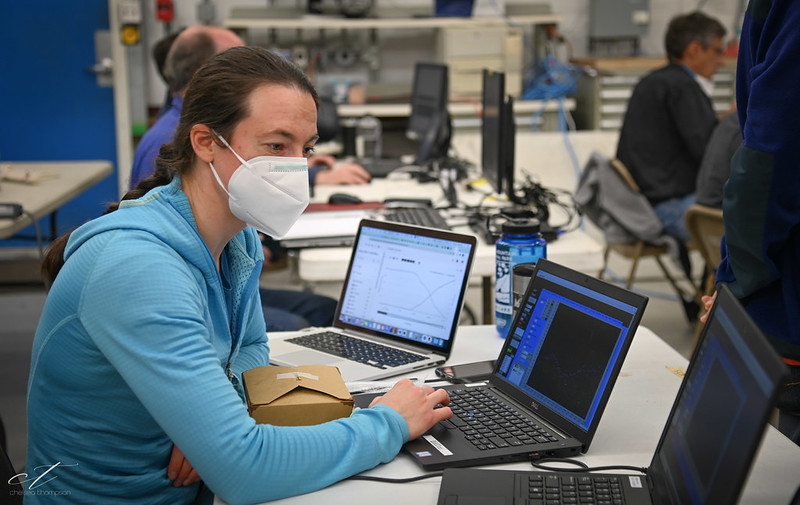

Eleanor Waxman works with the NOAA Chemical Sciences Laboratory (CSL) and University of Colorado CIRES as an Atmospheric Physical Research Scientist. Eleanor works as part of a team that measures the EPA criteria air pollutants nitrogen dioxide and sulfur dioxide using laser-induced fluorescence instruments developed here at NOAA. The field campaigns she has been involved with have measured these on NASA aircraft from the boundary layer up through the lower stratosphere across several seasons and in multiple parts of the world! Some of this data goes into analyses that look at ozone in the lower stratosphere, validating satellite measurements, and understanding urban ozone.
Read about when Eleanor feels most empowered as well as how she keeps a positive mindset while working in a climate related field by clicking here.
Eleanor feels empowered in her field when she sees women represented at all levels. During a recent field planning meeting, she recognized that a full fifty percent of the room was women across all levels of science – recent bachelors graduates, post docs, instrument principal investigators, and the campaign organizer leading the meeting.
Eleanor maintains a positive mindset while working in a climate related field by following the progress being made in her field. For example, people are now focusing on improving air pollution at the neighborhood level because the overall national and regional air quality has greatly improved. There have also been recent reports that the ozone hole is recovering. These are all good reminders of the importance of atmospheric science and that this research has real, long-term impacts.
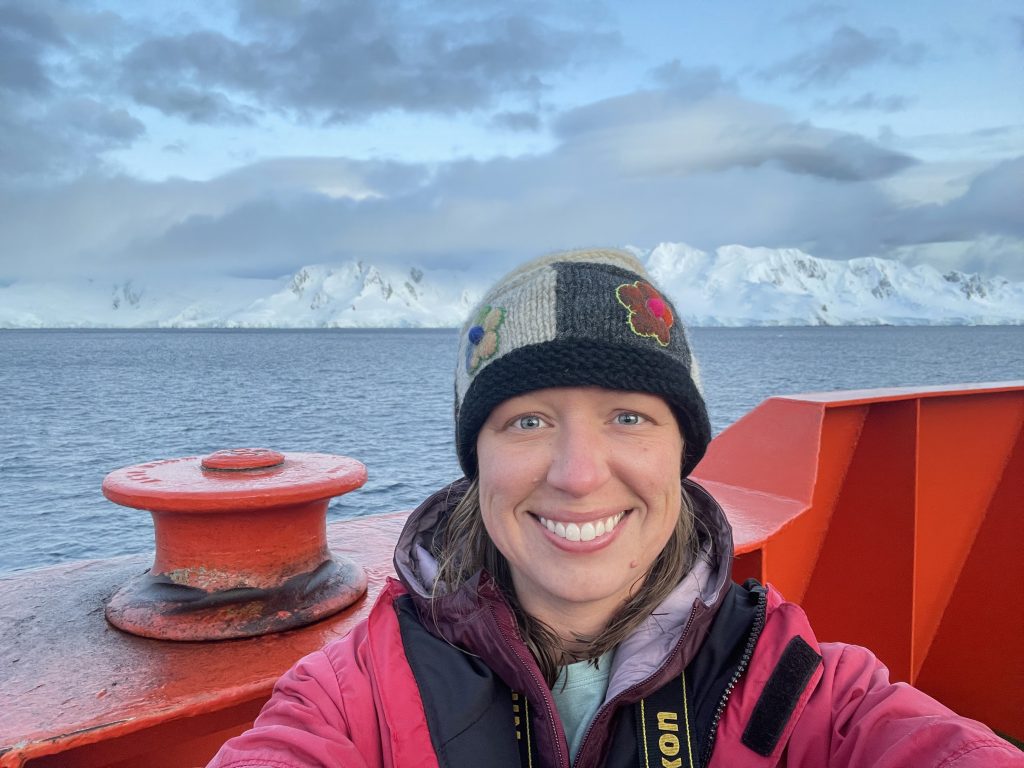

Christy Smith is the Acting Observatory and Global Network Operations Division Lead for NOAA’s Global Monitoring Laboratory. One project she is working on now is to make the NOAA Mauna Loa Atmospheric Baseline Observatory a net zero water and energy facility. This will make the research site, located on the side of the Mauna Loa volcano in Hawaii, more resilient to natural disasters, and significantly reduce the site’s carbon footprint.
When it comes to greenhouse gas and air quality research, she wants people to know that it takes a large team to collect atmospheric and climate data. It includes a strong administrative team, collaborative technicians in the lab, the field team making the measurements and repairing instruments, and another team to quality control and publish the data. Many components are necessary for high quality measurements!
Read about when Christy feels most empowered and what advice she has for women looking to enter the field by clicking here.
Christy feels the most empowered when solving problems. Whether it’s a logistical problem of how to ship something to a remote location or repairing an instrument in the field, she finds it very rewarding to find a solution to a tricky situation.
Christy’s advice for young women entering the field is to never discount an opportunity, even if it feels outside your comfort zone or feels like a “reach” assignment. She says you never know how far you can go until you start a journey, “without taking a few leaps, I never would have wound up where I am today.”
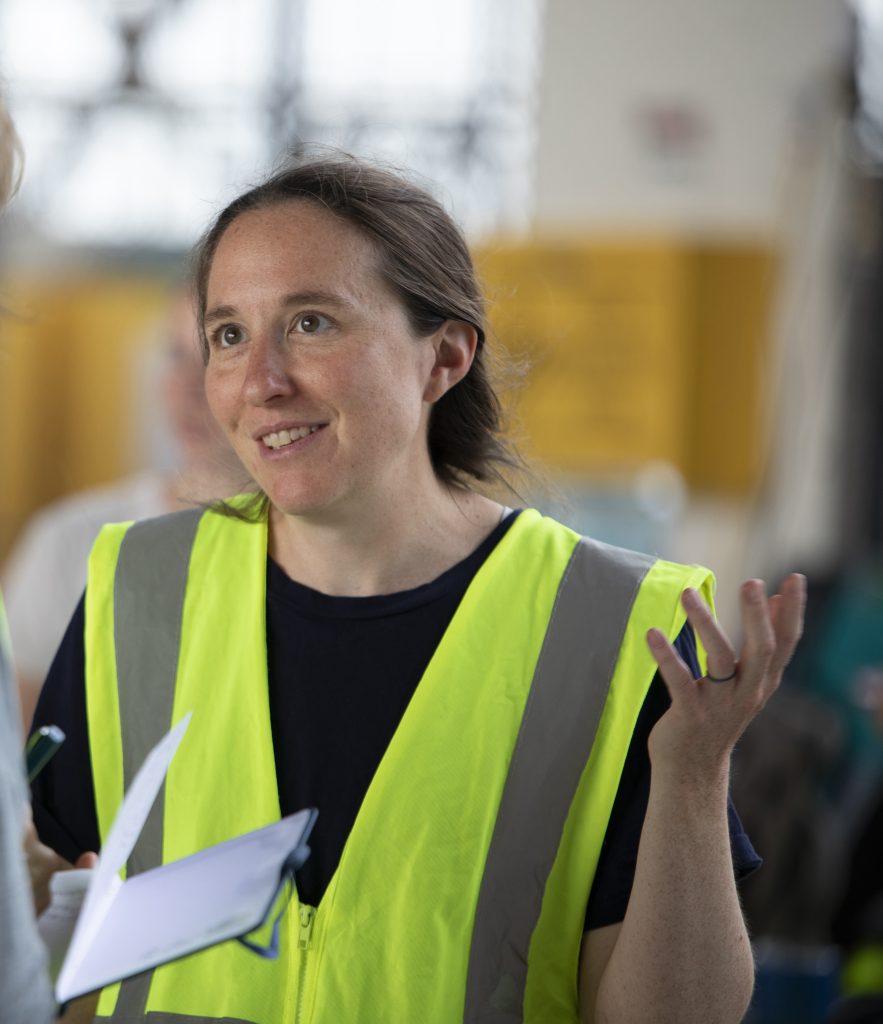

Becky Schwantes is a Research Chemist working for NOAA’s Chemical Sciences Laboratory. One of her recent projects was co-leading a major field campaign called AEROMMA, which stands for the Atmospheric Emissions and Reactions Observed from Megacities to Marine Areas. During AEROMMA, she and her team flew the NASA DC8 packed full with 30 scientific instruments over several North American megacities to investigate urban air pollution and greenhouse gas emissions. By combining the AEROMMA observations with state-of-the-art research air quality models, Becky and her colleagues plan to quantify how climate mitigation strategies like reducing fossil fuel emissions will also reduce air pollution and protect people’s health.
Read about how Becky keeps a positive mindset while working in a climate related field as well as her advice for women looking to enter the field by clicking here.
Becky keeps a positive mindset while working in climate research by focusing on building connections. She says, “we understand the science and have the technology to solve climate change and reduce air pollution. Change is challenging, but we can get there by working together.” Her number one goal right now is to build stronger connections between people with different perspectives and backgrounds, but common goals (e.g., scientists and engineers working across different fields, policy makers, and concerned citizens).
Her advice for women looking to enter the field is that to be a scientist you only need to be curious about the world around you and excited to learn new things. The ability to solve challenging problems is not based on your initial understanding of a topic, but instead your determination to grow your understanding and become the expert through reading, analyzing data, and collaborating with others.
